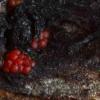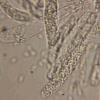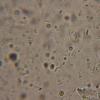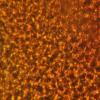
14-11-2025 16:26
 Marian Jagers
Marian Jagers
Hello everyone, On dead wood of Cytisus scoparius

15-11-2025 20:25
 Riet van Oosten
Riet van Oosten
Hello, Found by Laurens van der Linde, Nov. 2025

14-11-2025 18:31
 Lothar Krieglsteiner
Lothar Krieglsteiner
Hello,can somebody provide me with a file of:Rothe

12-11-2025 09:25
 Viktorie Halasu
Viktorie Halasu
Hello, I need help with a pale terrestric Pseudom

11-11-2025 20:16
Bohan JiaHi, lastly I have found these tiny yellow decayin

09-11-2025 13:20
Hello.A tiny ascomycete, appearing as erupting gra

08-11-2025 00:29
 Francois Guay
Francois Guay
I found this species in Quebec, Canada, on herbace
Nectriaceae on Ulex europaeus
Peter Thompson,
16-02-2020 16:48
I have found some pale yellowish red (young) and shiny red (mature) fruit bodies from the Nectriaceae. They are growing gregariously on the effete stromata and empty pits of an ascomycete, possibly Stylodothis puccinioides, on a thin, burnt branch of Ulex europaeus.
The asci are completely filled with allantoid ascoconidia, typically 4 x 1 um, so this is possibly a species of Thyronectria.
I have attached a photo of groups of the perithecia, along with micro photos of asci, asco conidia and excipulum.
I wonder if anyone is aware of a species which would grow on this host combination?
Thank You,
With Best Wishes,
Peter.
Alain GARDIENNET,
18-02-2020 08:44
Re : Nectriaceae on Ulex europaeus
Hi Peter,
Perhaps you think right. You should wait for one month or two, and then look at it again. Perhaps that it could be an interesting fungus, somewhere clode to Thyronectria species.
Best wishes,
Alain



